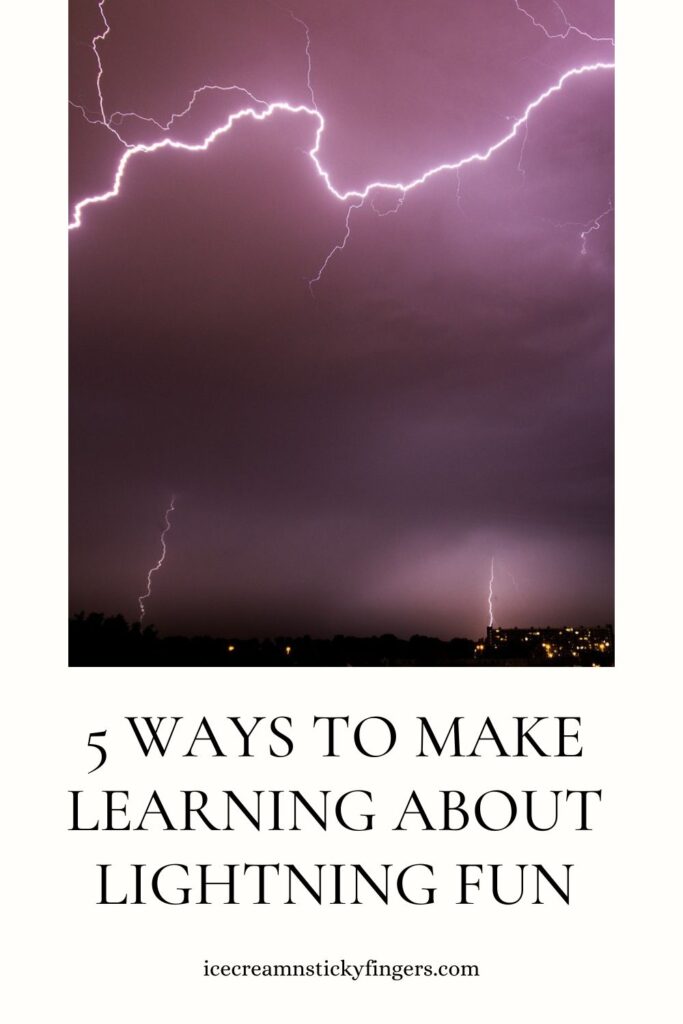What are some ways to make learning about lightning fun? Lightning is a powerful and intriguing natural phenomenon that offers lots to learn from. Understanding lightning is crucial due to its potential dangers. Teaching about lightning fosters a healthy respect and awareness of weather safety in children and enables them to understand why we take certain precautions during thunderstorms. Studying about lightning also provides a practical, real-world application of scientific concepts, such as electricity, temperature, and atmospheric pressure, thereby enriching their science education.

5 Ways to make learning about lightning fun with different creative lessons and educate children on all that they can learn from this natural phenomenon.
1. Interactive Weather Technology
Technology continuously proves to be an effective educational tool that offers interactive and insightful learning opportunities. It also plays a prevalent role in lightning detection, tracking, and studies. Exposing your kids to the many interactive weather technologies available, from lightning detectors to weather radars, provides a fun, interactive, real-life, and real-time educational experience. They can monitor and predict lightning strikes, turning a complex meteorological phenomenon into an interactive, engaging activity.
2. Lightning Experiments
Kids love to get involved, which makes experiments an effective and fun learning solution, no matter the subject. Hands-on experiments offer a tangible representation of complex scientific concepts, enhancing accessibility and comprehension. Simple experiments like creating static electricity with a balloon can provide a basic understanding of how lightning works.
3. Animated Videos
Colorful visuals, music, and animated characters know how to capture the attention of young minds. Explainer videos or animations can make the concept of lightning formation easy to grasp and enjoyable to learn about. You can find many online videos and websites that illustrate complex ideas in a fun, engaging manner that’ll have your kid’s full attention. Some popular sources include ‘National Geographic Kids’ and ‘BrainPop.’

4. Weather Field Trips
Nothing beats seeing what you learn about applied in the real world. Field trips to local meteorological stations or weather observatories help kids witness weather forecasting in action, understand the equipment used, and potentially stimulate their interest in meteorology. Such locations can also provide expert insight, enhancing your kid’s education.
5. Lightning Art Projects
Art projects related to lightning can bring out your kid’s creativity while solidifying their understanding of the topic. Create lightning bolt collages, chalk drawings, or costumes inspired by ancient thunder gods. These projects foster creativity and make learning about lightning a fun and enjoyable process.
Many people have misconceptions about lightning, preventing individuals from taking necessary safety precautions. Educating your kids about lightning in a fun way ensures they know how to be safe around lightning and also enriches their understanding of the power of nature and electricity. Incorporate these fun, interactive, and engaging lesson ideas and make lightning education electrifying.








Great ideas. My son has always been obsessed with the weather and would love any of these.
As a mom that homeschools, I absolutely LOVE this! Hands on or interactive has always been best for my daughter. Thank you for all the great tips!
So cute! My kids (and husband) love lightning! These will be fun to try out.
I like the idea of doing the experiments, I learn hands on.
I’m always looking for creative ways to educate my kids, and these ideas are fantastic. From interactive technology to lightning experiments and even field trips, you’ve covered it all.
This is a cute way to learn about the weather, and how lightning works as well. This would make a great field trip as well. That will cover all the basics.
I think lightning is a fascinating subject to learn about. I would love to watch the video of it all day long
Lightning is just fun in general! These do sound great for helping coax children that are less impressed by it into learning more!
Great weather phenomena to learn about! These are all wonderful ways to learn more.
Lightning is so cool, literally so.. and love all these cool ideas to make learning about it even more fun